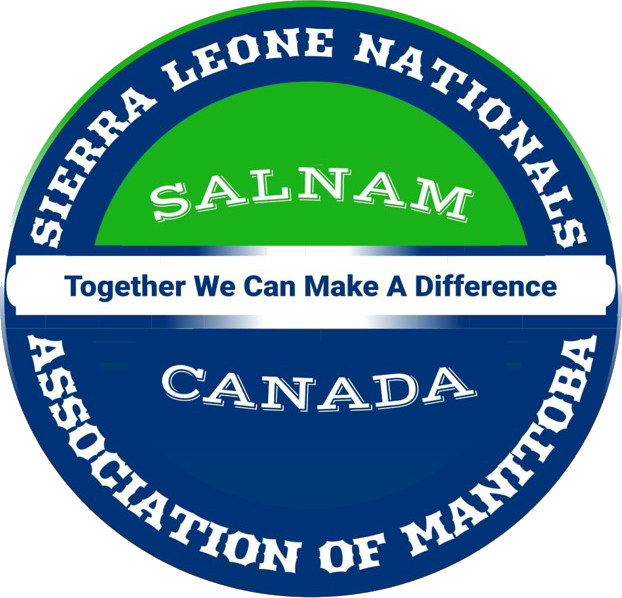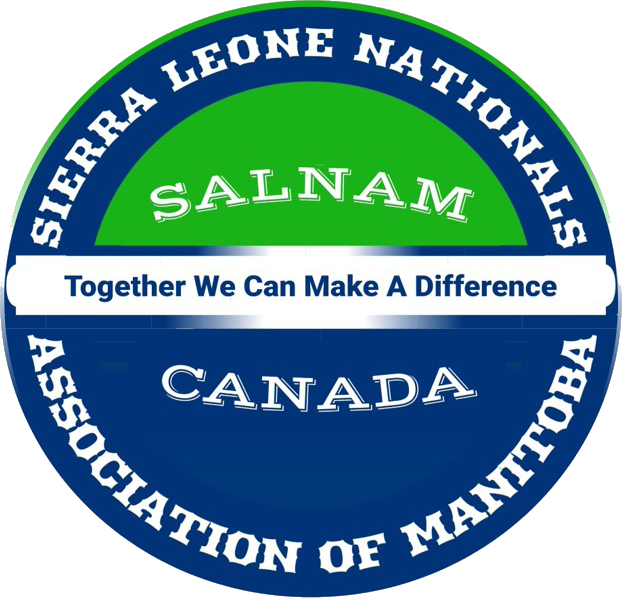PREPORT ON SIERRA LEONE NATIONALS ASSOCIATION OF MANITOBA (SALNAM) STRATEGIC PLANNING COMMUNITY CONSULTATIONS
DATE 16 November 2024 TIME: 12:00p m -2 :00pm
LOCATION: 1200 Portage Ave Winnipeg Manitoba.
Introduction and Meeting Overview
The strategic meeting conducted by the SALNAM executive began with a brief introduction led by Mr. A. Bah, who presented a cross-section of the executive members. This was followed by an introduction of community members. Mr. Bah then presented findings from a survey he had distributed to the community, noting that twenty individuals participated. He emphasized that the data collected reflected the views of the community members.
Background and Purpose of SALNAM
Mr. Bah provided an overview of the organization, describing it as a nonprofit entity established to foster unity, cultural engagement, inclusion, and collaboration within the Sierra Leonean community in Manitoba. He further explained that the organization’s vision is rooted in a transformative journey, focusing on evolving organizational needs, growth, and development. The five-year strategic plan aims to:
- Foster transparency.
- Ensure accountability.
- Restore community trust in the organization.
- Promote developmental initiatives for the community’s betterment.
Survey Findings presentations
Demographics:
Mr. Bah shared that:
- 80% of respondents have been part of the community for over 15 years.
- 13% have stayed for 5–10 years.
- 7% have been members for more than 25 years.
- 7% have been part of the community for 1–5 years.
Community Activeness:
Survey results indicated an equal number of participants confirmed they had been both active and satisfied with cultural events and activities over the past five years.
Valued Projects and Activities
According to Mr. Bah, the following projects and activities were identified as most valuable by community members:
- Youth leadership training.
- Representation of SALNAM at other community events.
- Visits to community members.
- Awards and honors celebrations.
- Seniors’ events.
- Support for subgroups and unity-building initiatives.
- Social cohesion efforts.
Challenges and Gaps
The survey revealed key challenges faced by the organization:
- 63% cited poor community participation.
- 13% mentioned lack of funding.
- 13% felt the current executive needs to do more.
- 13% expressed dissatisfaction with the past executive’s management.
Priorities for the Next Five Years
Participants prioritized the following events for the next five years:
- Representation at community events (41.2%).
- Fundraising events (29.4%).
- Sporting events (29.4%).
- Folklorama and cultural performances (23.5%).
- Skills training and youth empowerment (17.6% each).
- Community outreach activities (17.6%).
- Membership dues payment (11.8%).
Respondents also highlighted the need for initiatives in mental health, youth leadership development, advocacy, cultural preservation, and fostering stronger ties with local Manitoba institutions.
Volunteer Commitment
The survey indicated varying levels of commitment to organizational activities:
- 31% were willing to volunteer during events.
- 19% expressed willingness to help with projects.
- 19% planned to attend organizational programs.
- 19% were willing to attend meetings.
- 13% showed interest in supporting fundraising and proposal writing.
Address by the SALNAM President
The SALNAM president encouraged members to focus on what he called the “Four WEs”:
- We need to participate.
- We need to donate.
- We need to build.
- We need to leave a legacy.
He urged members to take ownership of the organization and invest in building physical infrastructure for future generations. Community members appreciated the executive’s efforts and called for more events to promote engagement and inclusivity.
Strategic Planning Session
Facilitator’s Guidance:
Mr. John Gaye, the lead facilitator, outlined the team’s objectives within the stipulated timeframe. He emphasized that the mission and vision statements were foundational to the strategic plan. While the president clarified that changing the mission statement required a constitutional process, the facilitator recommended revising the vision statement.
SWOT Analysis:
Mr. Gaye introduced a SWOT analysis to assess the executive’s performance and the organization’s strategic position:
· Strengths:
- Community solidarity.
- A large population base.
- Diverse educational backgrounds.
- Cultural diversity.
- Favorable demographics.
- Religious tolerance.
- Talented community members.
- Welcoming spirit.
- Determination and dedication.
- Conflict mediation.
· Weaknesses:
- Lack of participation.
- Weak solidarity.
- Internal politics.
- Tribalism.
- Lack of dedication.
- Personal grievances.
- Lack of engagement.
- Insufficient funding.
- Lack of mutual support.
- Internal competition.
· Opportunities:
- Favorable political environment.
- Strong executive leadership.
- Funding opportunities.
- Infrastructure acquisition.
- Cultural diversity.
- Business opportunities.
- Participation in Folklorama.
- Large population.
· Threats:
- Internal competition and conflict.
- Limited time resources.
- Competition from other communities.
- Low volunteer turnout.
- Poor business engagement.
- Rapid technological changes.
- Loss of cultural identity.
Recommendations and Way Forward
The facilitator provided guidance on the next stages of the strategic planning process. The event concluded with community members expressing satisfaction and pledging their support to future initiatives.









